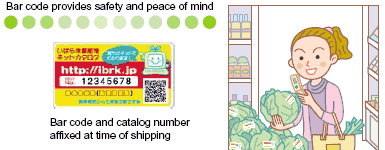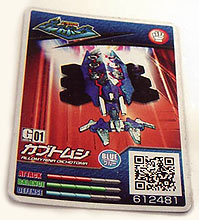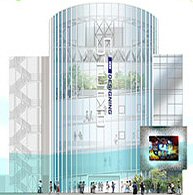Japanese Use Cell Phone QR Bar Code Readers to Check Food Safety

Belly up to the Bar Code: QR codes are reducing the fear factor for foodstuffs in Japan as agricultural associations embrace the new wireless technology tagging fresh produce for quick access to mobile information Web sites. A new English-language report [.PDF] released this month by NTT DoCoMo on QR code use in agriculture reveals the growing popularity of this medium.
Forget any assumptions about Hicksville. Japanese farmers have little fear of technology. Rural Ibaraki Prefecture has turbo charged their QR coding for agricultural products tagging a wide variety of vegetables grown in that prefecture. Ibaraki Prefectural authorities and the JA Ibaraki Prefecture Central Union of Agricultural Cooperative cooperating with other farming and agricultural associations are adding QR code labels right at the point of origin. In the supermarket, consumers use camera equipped cell phones to scan the QR code on the label. The code links to a mobile website detailing origin, soil composition, organic fertilizer content percentage (as opposed to chemical), use of pesticides and herbicides and even the name of the farm it was grown on. Consumers can also access the same information over the Ibaraki Agricultural Produce Net website by inputting a numbered code on each label.


 Giant beetles are big business and big fun in Japan. Toy maker Tomy is capitalizing on the current Japanese craze for all things beetle by introducing a mobile game and information site for their line of spring-wound
Giant beetles are big business and big fun in Japan. Toy maker Tomy is capitalizing on the current Japanese craze for all things beetle by introducing a mobile game and information site for their line of spring-wound  Despite the date, this is no joke. Based on patented technology from
Despite the date, this is no joke. Based on patented technology from  KDDI has opened an Alpha Pup playland for its mobile universe right in the heart of Tokyo fashion central — Harajuku. Five floors of interactive phones and games,
KDDI has opened an Alpha Pup playland for its mobile universe right in the heart of Tokyo fashion central — Harajuku. Five floors of interactive phones and games,